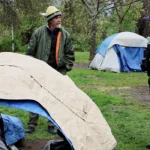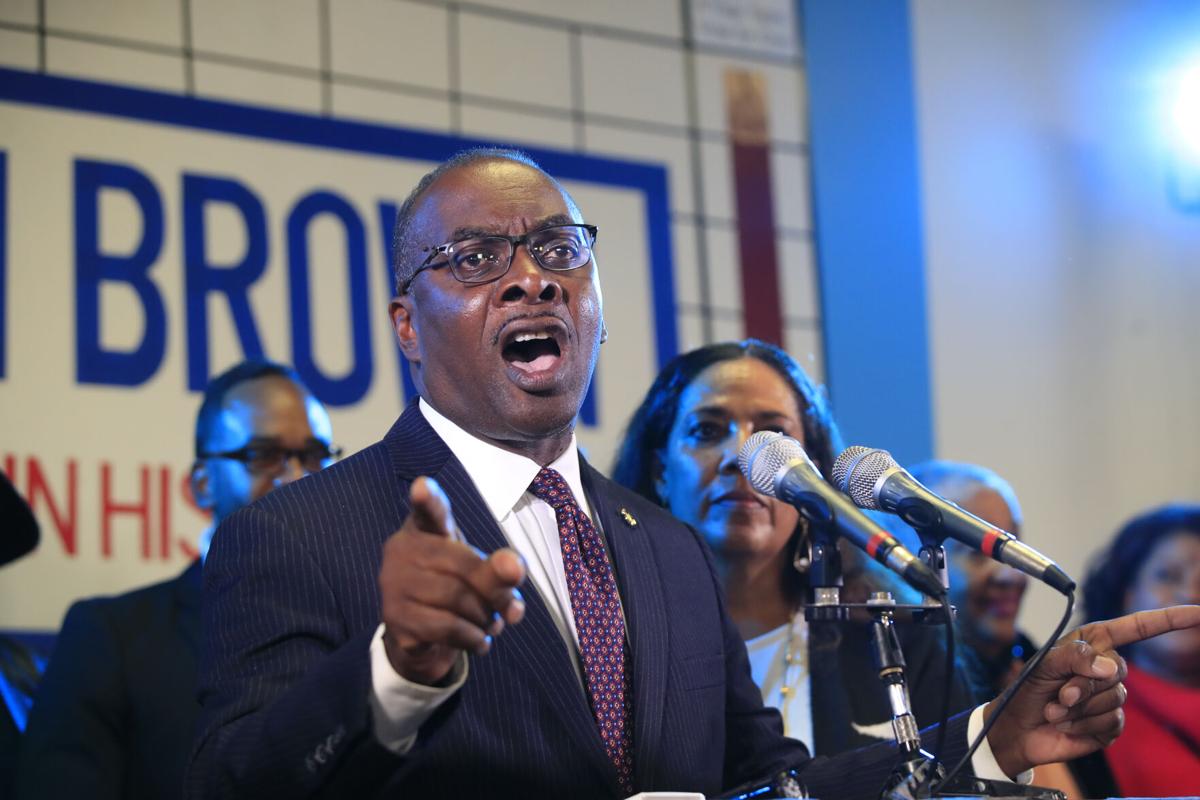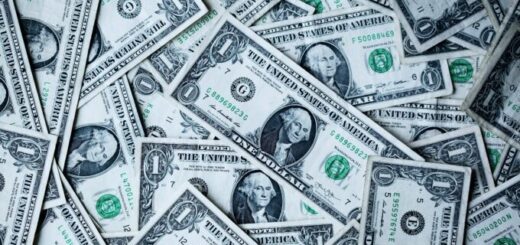CHAOS OR COMMUNITY: REFLECTIONS ON MARTIN LUTHER KING, JR. AND DONALD TRUMP
BY DR. HENRY LOUIS TAYLOR JR.
Ironically, five days after Martin Luther King, Jr.’s birthday, Donald Trump will take the oath of office as the 45th president of the United States, and the nation will again be faced with question King posed in his final book, “Where Do We Go from Here: Chaos or Community?”
Reflections on the leadership style of King and Trump will provide insight into how this question will be answered in Donald Trump’s America.
Leadership style cannot be separated or isolated from the content of the leader’s character, the progressiveness of their worldview, and the type of society he or she seeks to fashion. The fusion among these ideals is what distinguishes the authentic visionary and transformational leader from the demagogue—that charismatic, narcissistic figure who exploits the fears, anxieties, and prejudices of others in their quest for power and influence.

Martin Luther King, Jr. was an authentic visionary and transformational leader.
King lived in a world where virulent racism masked black injustice, structural inequality, and, what Iris Marion Young calls, the five faces of oppression. In this dangerous, openly racist time, when obedience is rewarded and defiance punished, King rejected the comfort and fantasies of E. Franklin Frazier’s Black Bourgeoisie. Instead, he embraced struggle and accepted the responsibility of leadership in the Civil Rights Movement.
King was a visionary leader, but he did not conjure up that dream of a better, more just and democratic America. That dream was birthed in the long black struggle for freedom—from the revolts on slave ships to the fight for Civil Rights and the Human Rights battle for the broader freedoms–decent housing in wholesome neighborhoods, quality education, health care, food and nutrition, along with jobs with living wages and desirable life chances.
So, in August 1963, when Martin Luther King, Jr. proclaimed, “I have a Dream,” he was speaking for the untold millions of blacks who had fought—and were fighting–for freedom.
King’s leadership style, then, was derived from his connectivity to the masses and their freedom struggle. Blacks loved and trusted King because he spoke from the heart, truly understood their suffering, and was inspired and uplifted by their courage and commitment to building a better world.
A powerful illustration of this leadership style is found in his “Letter from Birmingham Jail.” In this response to criticism from eight southern religious leaders, King said, “I am in Birmingham because injustice is here…,”and “…injustice anywhere is a threat to justice everywhere. We are caught in an inescapable network of mutuality, tied in a single garment of destiny. Whatever affects one directly affects all indirectly.”

“Who is Donald Trump?”
The start point in unmasking Trump is knowing that he admires Ayn Rand. Her philosophical beliefs undergird his leadership style, world view, and demagogic approach to politics.
Two dimensions of Rand’s thinking are particularly critical to unmasking Trump. Like Rand, Trump uses a simplified optic, which views the U.S. as a society peopled by the makers (capitalist class), and takers, that live off wages paid by the makers. The makers and takers are locked in ongoing class warfare, which Jonathan Chait calls inverted Marxism.
Trump expands the Rand thesis by subdividing the makers and takers classes. He divides the makers into two groups: Ayn Rand capitalists (ARC) and the others, a weak group of capitalist, who cower to politicians that regulate business, raise taxes, and redistribute wealth through transfer programs. The takers are broken down into racialized subgroups, including the white precariat, which I will discuss later.
Defeating Hillary
When Trump announced his presidential candidacy, he said the American dream was dead, but he would resurrect it by Making America Great Again. This message was for the white precariat.
The British scholar, Guy Standing, coined the term precariat to describe the growth of people whose lives were being disrupted by global neoliberalism and dominated by insecurity, uncertainty, fear, debt, humiliation, and unhopefulness, a belief that institutions and politicians no longer care about them.
Trump appealed to America’s disaffected white precariat, even though he despised them, along with the entire taker-class. Yet, concurrently, Trump viewed them as potential allies. The Donald believed the other’s (Democrats) approach to governance was creating the type of dystopia Rand described in Atlas Shrugged.
Trump believed the disgruntled, angry white precariat could be mobilized in the fight against them. He knew they were suffering and blamed their misery on the Washington elite.
In Atlas Shrugged, Trump found the clue to winning over the white precariat.
Rand says, “People don’t want to think. And the deeper they get into trouble, the less they want to think. But by some sort of instinct, they feel that they ought to and it makes them feel guilty. So, they’ll bless and follow anyone who gives them a justification for not thinking (emphasis added).”
Donald Trump embraced this viewpoint, and it freed him from reliance on the truth. Now, he could say anything. Disguised in a populist costume, Trump mimicked a Disney imagineer, and used a take-no- prisoners, authoritarian brand of leadership combined with lies, distortions, half-truths and fantasy-based policies to win over the white precariat and to sneak by a clueless Democratic Party to capture the presidency.
This brings us back to the question posed by King fifty years ago, “where do we go from here: chaos or community?”
Trump is an authoritarian, no-holds-barred leader, who will not unite the American people. Trump does “have a dream” to Make America Great Again, but this is a fake-dream. His goal is to use the white precariat as foot soldiers against the Democratic Party and consolidate the ARC powerbase.
The Donald’s neoliberal strategy of small government, lower taxes, and de-regulation will be
accompanied by heightened repression, military aggressiveness, and endless lies designed to keep the white precariat in check. But the American people will fight back, including the progressive wing of the white precariat.
Where do we go from here? I am putting my money on chaos.
Henry Louis Taylor, Jr. is an urban planner and historian. He is a full professor in the University at Buffalo Department of Urban and Regional Planning and is the founding director of the UB Center for Urban Studies.
Author Profile
Latest entries
 Selected Media04/24/2024Supreme Court Justices Question if Outdoor-Sleeping Ban Unfairly Targets Homeless
Selected Media04/24/2024Supreme Court Justices Question if Outdoor-Sleeping Ban Unfairly Targets Homeless Selected Media04/23/2024Leonard Greene: O.J. Simpson ex-teammate says trial showed ‘Black man can buy justice like a white man’
Selected Media04/23/2024Leonard Greene: O.J. Simpson ex-teammate says trial showed ‘Black man can buy justice like a white man’ Selected Media04/22/2024If SCOTUS Restricts Emergency Abortion Care, Poor and At-Risk Populations Will Suffer Most
Selected Media04/22/2024If SCOTUS Restricts Emergency Abortion Care, Poor and At-Risk Populations Will Suffer Most Selected Media04/21/2024Homeless, Zip-Tied, Hungry: Ilhan Omar’s Daughter Recounts Protest Arrest
Selected Media04/21/2024Homeless, Zip-Tied, Hungry: Ilhan Omar’s Daughter Recounts Protest Arrest



